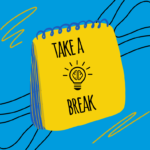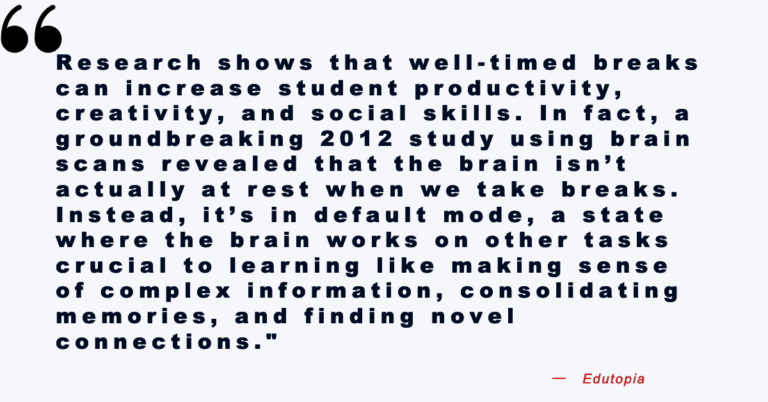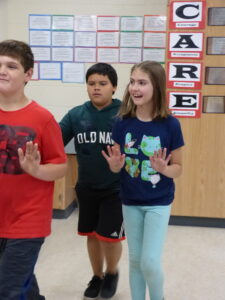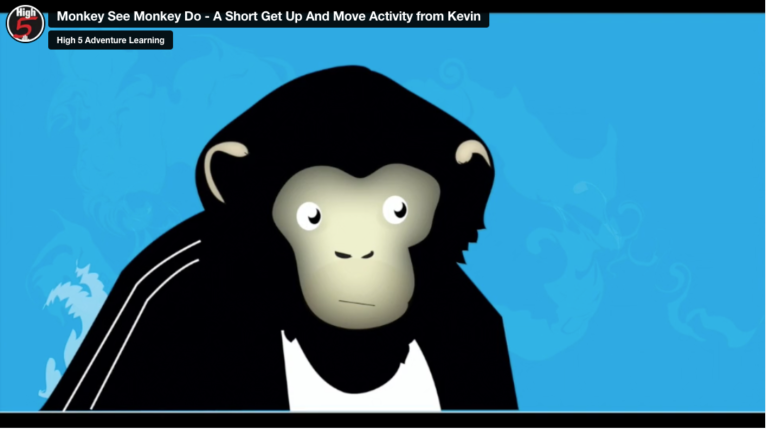Put on the Brakes in Class with Brain Breaks
What do humans and sea slugs have in common? The fact is they both learn better when acquiring knowledge in speedy bursts, rather than marathons. This leads to the next question: What can we do to facilitate learning in a world that is fast-moving and full of distractions? Rather than throw our hands up in the air, we want to toss out another option, one that may seem counterintuitive: Put the brakes on with a brain break.

In a 2016 study, Dr. Karrie Godwin, a developmental psychologist at Kent State University, reported, “Maintaining attention in formal learning environments is really quite difficult for young kids…children were less attentive as lessons increased from 10 to 30 minutes.” Recent studies suggest that globally, attention spans are decreasing. The need for allowing the brain time to rest is an essential part of the learning process, one too often given short shrift in our hurry-up world. The idea of punctuating periods of learning with periods of alternative focus has a name: brain breaks, coined by educational researchers about a dozen years ago. As noted in a 2018 issue of Edutopia:

Examples of Brain Breaks
Brain breaks are like mini vacations for the mind allowing students to turn their attention elsewhere, without the pressure of coming up with answers, or keeping still in their seats. They not only free the mind but they can also free the body with bursts of physical activity. Years ago, our team developed a short dance-inspired video with our unofficial office mascot, Kevin, leading the activity. It’s called Monkey See Monkey Do, and it’s an example of a brain break with all the important components: movement, engagement, playfulness, and it’s short. Below is an abbreviated version of the video – a playful energizing activity any time of day. Give it a go!
- For a less vigorous brain break, give Push Catch a try – a quick and engaging activity that asks participants to do the opposite of what you say. The download includes a couple of variations, too.
- N.B.: If you are looking for a book full of activities for use in brain breaks that depend on your imagination then check out this resource in our Store: No Props No Problem.

Get Creative with Breaks
So, it stands to reason, as the Edutopia article further explains, “Without breaks, we simply don’t learn as well. Breaks allow students of all ages to regain focus… One study showed that for elementary kids, several ten-minute lessons were far more effective than fewer thirty-minutes ones. Plan for repeated pauses throughout the day…and give students time to process their learning. Make them active. Integrating physical activity into your breaks can boost moods, reboot motivation, and improve cognitive functioning. Make them social. Giving students time to interact can improve social skills like conflict resolution, collaboration, and group problem-solving.”
“Breaks are a key part of learning, helping students process what they’ve learned by consolidating memories and making connections to other ideas.”
Factor In Processing Time
We explored the impact of time and the pace of learning with high school students in a past blog, “Why Time Is So Important in Learning.” We shared author and educational consultant Chip Wood’s thoughts about the importance of allowing students the time to process what they’ve learned, incorporating it into long-term memory, and integrating new learning into an accessible and functional framework of understanding. For elementary and middle school students this is especially important—adolescent brains (ages 10 to 15) process information about the world around them at the same rate of speed as infants—the fastest they will ever acquire knowledge throughout life!
In fact, adolescent brains are working hard even when at rest. In a 2012 study, Researcher Mary Helen Immordino-Yang, along with colleagues at USC and MIT, used MRI in examining activity of the brain in a resting state, normally associated with letting our minds wander. In this ‘default’ state, the brain is still active, though in different regions than when we are externally focused. It turns out this default mode is essential for consolidating memories, reflecting on experiences, future planning, and generally making sense of our lives.
Reflecting on the Benefits of Brain Breaks
So breaks are an essential part of learning. But the benefits extend beyond the processing of lessons to the psychological well-being of students. Particularly for younger students, regular breaks throughout the school day help to reduce disruptive behavior. Results from a series of studies have shown that short physical activity breaks in the classroom improved students’ behavior, helped increase the effort they put into activities, as well as improving their ability to stay focused and on task. Connecting with students on a more personal level during brain breaks is an extra bonus.
During one period, extending from the nineties into the early 2000s, considerable research was conducted on the benefits of ‘nature’ breaks, that is, getting outside, whether to engage in directed activities or simple free time. The effect was the same as the 2012 Immordino-Yang study: the children’s brains shifted into default mode allowing a period of reflection and integration of lessons into a working whole. But the time needed to get a class outside is sometimes considerable, requiring dressing warmly, traveling to the playground, and the return trip and readjustment to the indoor environment. As the research stated above, if the break is well-timed, then it’s worth the extra effort that may be required to head outside. The proof is in the reflection, once you return to the classroom and observe your students’ behavior and focus level.
So, as our friend the sea slug would say—if it could—let’s start learning smarter and, ‘G…I…V…E…M…E… a brain break!’
Additional Resources
- Vertical Playpen Podcast Episode #157: Brain Chemistry and Play
- Blog: Why Time is So Important in Learning
References
HIGH 5 ADVENTURE LEARNING CENTER
130 Austine Drive, Suite 170
Brattleboro, VT 05301
802-254-8718
877-356-4445
Fax: 802-251-7203

